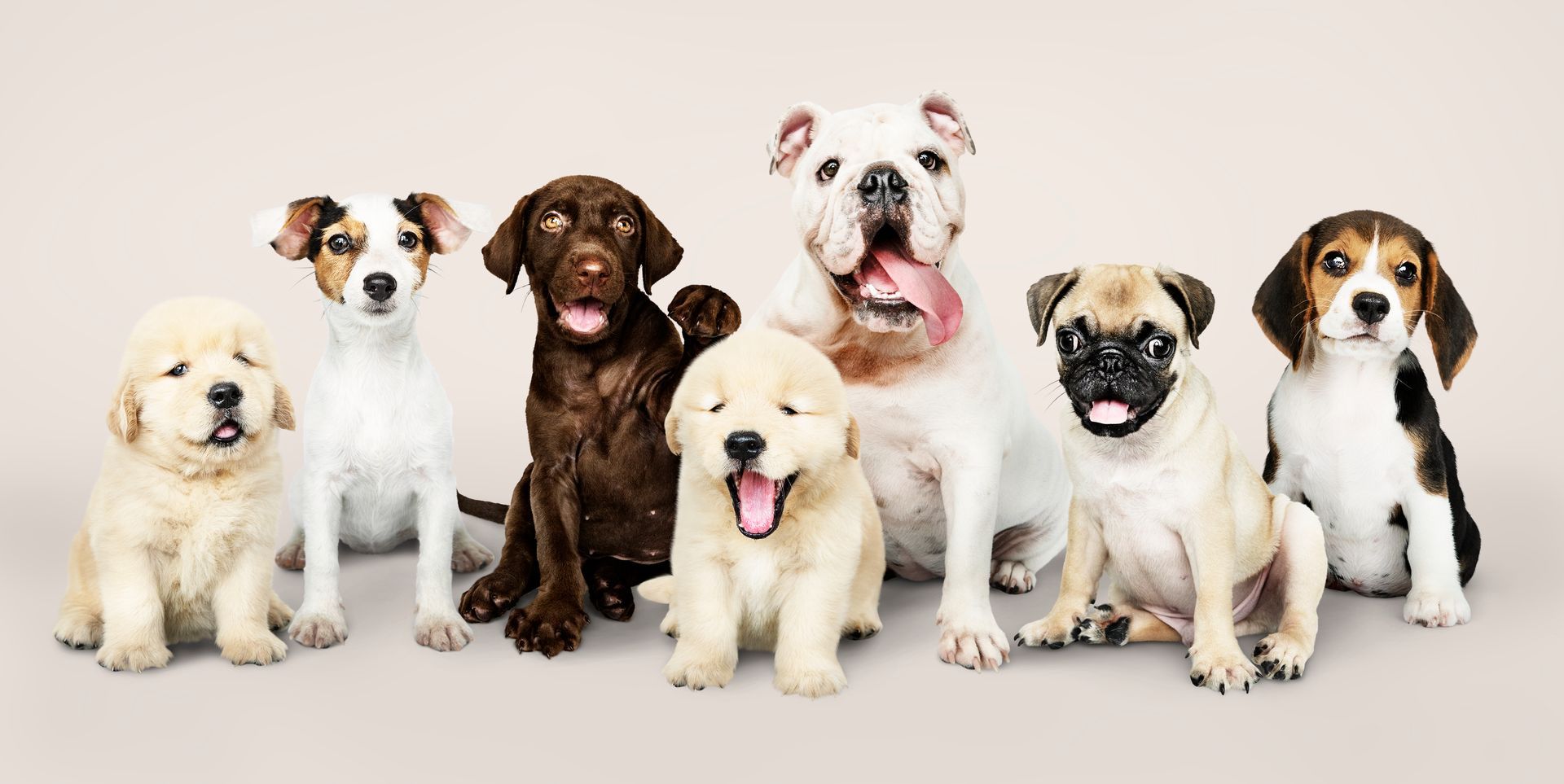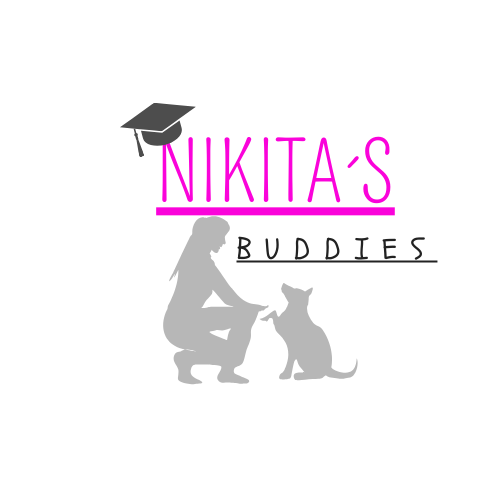
-
The first days with your puppy - rehoming
The first days with your puppy or rehomed animal
-
Puppy prevention training
What could be better than starting with a clean slate? We have all done that and along the way you learn what is and is not pleasant. What am I going to do more, what should I do and what am I not going to do anymore. A puppy is just like us a baby and still has an empty backpack. As an owner, you have the task of ensuring that as few unpleasant experiences as possible enter this backpack. Of course, we cannot prevent unpleasant experiences from entering at all, but we do have influence on them.
-
Socialization
Socialization is one of the most important processes in the puppy phase. At the age of 3 to 5 weeks, your puppy is not afraid of anything yet, because the systems that control fear are not yet well developed. During this period, the breeder has an important task. Getting to know everyday things such as vacuuming, sounds, objects and other surfaces, women, men, children, hats, etc. It is an important phase, because they are not actually afraid yet. This changes from about five weeks. Now the fear system is developed and they are therefore also somewhat more reserved with new things and situations. The peak of this phase is at eight weeks when you get your puppy and stabilizes around the twelfth week. It is not strange that some situations are somewhat more difficult, because he is in the first fear phase and everything is new to him. But it is all the more important not to force anything and to discover it slowly when your puppy is just here. Socialization is roughly speaking introducing different relevant objects and situations, but at your own pace and not too much per day. We don't mean once, but it is continuing to repeat good experiences with the situations that are important, because it is not the case that if he has seen something once he will think for the rest of his life 'oh that will be good'. Make a list of things that you find important such as the train, the car, colored people, busy market, children, umbrella, cap, sunglasses, various sounds, surfaces, vet, horses, sheep, goats etc. The point is that the situations that he can come into contact with a lot because you would like to take him to the market for example are practiced, good experiences are gained. So good guidance of this is crucial. The quality of coming into contact with is more important than as much as possible as often as possible what many owners think is socialization. They lure them there or force them, but that is not the intention.
-
Benchtraining
How do you do this? What is nice for the puppy is to put the bench in a puppy pen, for example. In the bench you put a wonderfully lovely bed for him and keep the door open. If you want to give him something tasty, you put it in the bench. If you are going to give him his food, you put it in the bench. In this way he will make a good association with the bench, because there is always something tasty in there, fun to go there! You can make the puppy pen a little smaller each time. If all goes well, he will automatically go and lie down in the bench, because he lies there nicely on a soft surface and he gets treats there. If you notice that he lies in it more often and feels comfortable, you can give him a treat, close the door and open it again immediately. You will build this up slowly. Make sure that it goes at his pace and that your puppy remains okay when he is in it with the door closed. What is okay? He may look up when you close the door, but if you see that he wants to get out quickly or is getting scared, then you have really gone too far and you have to go back. Puppies often panic because they can no longer get to you or because they know that the owner is leaving and find being alone scary. Being alone is also something that you have to slowly build up to. It is not advisable to leave your puppy alone until twelve weeks, because he is simply not independent enough yet. If you cannot be home, arrange for a babysitter. A puppy does not feel safe yet because he is so dependent on you as the owner and he also has to learn this. It is therefore unwise to leave your puppy alone yet. It may even be the case that the puppy will not be able to be alone at all, because he feels scared. It is better to first offer him the safety he needs and then start building up. You do this first by going into another room in the house without your puppy. Do not close any doors yet, but use a puppy/baby gate so that you can see how the puppy reacts. If this goes well, close the door once and come back immediately. You will repeat this countless times until your puppy gets bored of it. Then you can leave the door closed for a few seconds and build it up from there. If this all goes well, you can also try this with the outside door. Really build it up by the seconds, because you never know when panic suddenly strikes. It is also useful to place a camera in the house by the door or in the hallway or living room with a view of the puppy so that you can watch along if necessary. So if your puppy can handle being alone for five minutes, you do not suddenly go out for dinner with friends. The fact that your puppy can be alone for a while without any sign of stress does not always mean that he likes it. You do not want your dog to panic, because this will only get worse. He does not know that if you leave for how long this will be, so there is a chance that he will not be able to handle it at all when you put on your coat. So it is so important to spend time on this. If your puppy has no problems with this, the process will go faster, but if you see that your puppy finds it difficult, then really arrange a sitter or daycare, even if you only have to go away for a short while. If it goes well, you can leave your puppy alone for a maximum of three to four hours after you have built it up properly. Dogs are social creatures just like us, so most dogs will never really like being alone. It is ideal to leave your puppy alone with a crate and puppy run, because then they have freedom of movement and do not feel locked up. Some dogs are fine in the run, but not in the crate. If you use a crate, make sure it is big enough. Your puppy and adult dog later, must be able to stand, lie flat on its side and turn around without having to make any effort. Also very important, make sure there is always access to water! If you want help with learning the crate, you can contact us via the contact form with the subject crate training.
-
How Dogs Learn
How do dogs actually learn? They learn to some extent the same as we do, but they are not as conscious of processes as we are. They learn in two ways;
-
Dominance in dogs
-
Role of training
Training ensures that you understand your dog better and that your dog understands you. It is especially nice for your dog if he understands what you mean. If you have read how dogs learn, you know that they do not speak Dutch and they learn by making associations. They cannot communicate like us and have to guess what we mean. That can be quite difficult. If you train your dog from an early age (dogs also learn faster in their early years) and actively communicate with your dog by teaching hand gestures or words, life is a lot more predictable for your dog and let's be honest... it is quite nice to know what is coming and especially if you do not speak the same language. I always compare it to being kidnapped by people who do not speak my language and have a different mentality, such as the Chinese. I do not speak the same language, they have no bad intentions towards me, but I have no idea what they want from me. The language is also far from the one I speak. I think it is quite scary. Once I get used to it and realize that nothing terrible is going to happen, I will try to learn their language. That is quite difficult and will be laborious. I can make associations when something is going to happen, but if they help me to try to learn what their language is and what they mean and expect from me, this will go much faster and also be a lot less scary. I will gain more confidence in the people I stay with and will also feel more loved and have more fun than if I am only on my own and only have breakfast, lunch and dinner with them. Can you imagine what I want to say with this? It is not to judge, but a lot of people are not aware that a dog really does have needs in interaction with people and I am not just talking about cuddling and a walk with a phone in your hands. It has even been proven that - and we are talking about positive training of course - dogs have more interaction with their owner (Rooney 2011), they are the most obedient (Hibey 2004) and show less problem behavior (Blackwell 2008) than dogs that do not participate in (positive) training.
-
Failure behavior why?
Why does your dog bark when he sees another dog? There can be a number of reasons, but the biggest one that often lies behind it is fear. You wouldn't say it when you sometimes see how dogs hang aggressively in the leash, where the owner sometimes has to firmly anchor him to keep him. It often seems as if the dog wants to tear the other one apart, but nothing is what it seems. Conflict-avoiding as dogs are, this is not something they do naturally. No, when this behavior rears its head, a lot has usually already happened. Plus the learning experience that it works, because the other dog will leave anyway.
-
Fireworks fear
There are so many dogs afraid of fireworks. Every year many dogs and their owners struggle with stress instead of celebrating the new year. And the worst part is that it often only gets worse. That is why it is important to train preventively. This does not mean that you have to put on a CD with fireworks sounds. There is much more to it and the safest thing is to involve or ask someone to help with this, because quite a lot can go wrong. Especially if you have a dog that is already a bit more anxious by nature.
-
Teaching dogs to read
Describe the item or answer the question so that site visitors who are interested get more information. You can emphasize this text with bullets, italics or bold, and add links.
New paragraph


